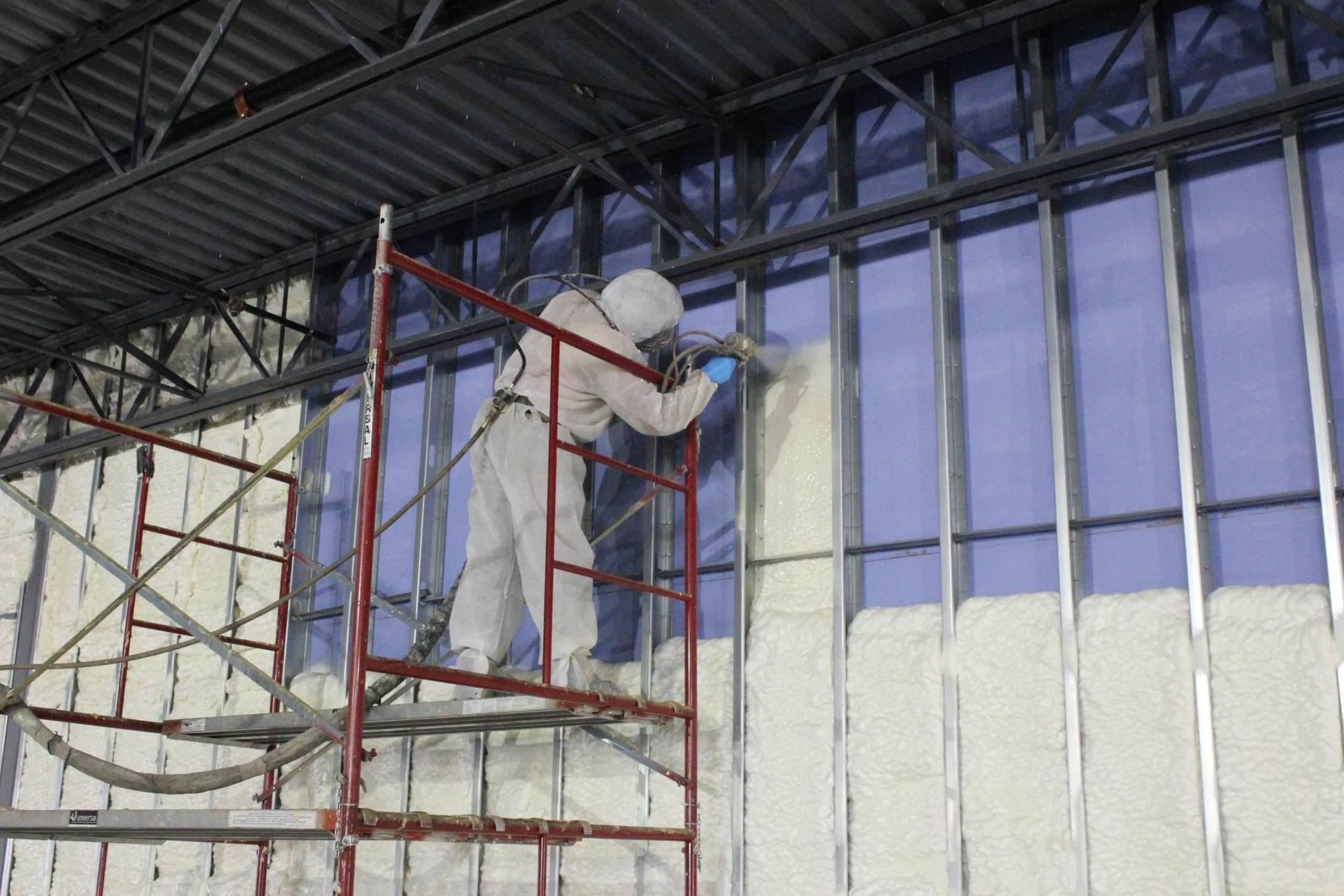Tired of high energy bills and rooms that never feel quite right, no matter the season? The culprit could be poor insulation—something many homeowners overlook. That’s where spray foam insulation comes in. Unlike traditional options like fiberglass, spray foam expands on contact to seal every crack and gap, locking in comfort while reducing energy loss. It’s a modern, efficient way to insulate your home and improve indoor air quality.
In this article, we’ll explore what spray foam insulation is and how it works to keep your home comfortable and efficient.
What is Spray Foam Insulation?
Spray foam insulation is a type of insulating material that starts as a liquid and quickly expands into a thick foam when it’s sprayed onto a surface. It’s made by mixing two chemicals—polyol resin and isocyanate—which react together and cause the mixture to expand rapidly.
As the foam grows, it fills in cracks, holes, and hard-to-reach areas, then hardens into a solid layer. This creates a tight seal that blocks air, moisture, and even noise. Because of its ability to fill every gap and provide strong insulation, it’s often used in walls, attics, crawl spaces, and basements to improve energy efficiency and indoor comfort.
How Does Spray Foam Insulation Work?
Now that you know what it is, let’s take a closer look at how spray foam insulation actually works and what happens during the process.
Chemical Reaction
The process starts when two separate liquids—polyol and isocyanate—are combined at the nozzle of a spray gun. This mixture kicks off a rapid chemical reaction within seconds of application.
As soon as they meet, these components react and begin to expand. This transformation from liquid to foam allows the material to reach deep into corners and crevices before hardening.
Rapid Expansion
After application, the liquid mixture increases in volume dramatically—often expanding up to 60 times its original size. This growth happens almost instantly upon contact with surfaces.
The ability to expand so quickly makes it ideal for filling in irregular spaces that traditional materials might miss. It adapts to any surface, forming a tight, even layer.
Air Barrier
Once expanded, the foam forms a solid and continuous layer that blocks air movement completely. This stops outside drafts from seeping in and traps conditioned air inside.
That airtight seal significantly improves indoor comfort by preventing temperature swings and reducing the workload on your heating and cooling systems.
Heat Resistance
One of the core functions of spray foam is to minimize the transfer of heat through walls, floors, and ceilings. Its dense structure provides excellent resistance to thermal flow.
Because it reduces energy waste, this insulation choice helps homeowners maintain consistent indoor temperatures while lowering monthly utility bills.
Moisture Barrier
Besides air, the foam also creates a barrier to humidity and liquid water—especially in its closed-cell form. This is useful in environments prone to dampness or leaks.
By stopping moisture infiltration, it helps prevent issues like rot, mold, or mildew that can compromise both your comfort and your home’s structure.
Adds Strength
Once fully cured, closed-cell spray foam adds rigidity to surfaces where it’s applied. This extra stiffness strengthens walls, ceilings, and other structural elements.
This added durability can be particularly valuable in buildings located in areas with frequent storms, high winds, or shifting soil conditions.
Long Lasting
Unlike conventional materials that may degrade, shift, or settle over time, spray foam retains its shape and effectiveness for many years. It doesn’t sag or compress.
Its long-lasting nature reduces the need for maintenance or replacement, making it a reliable investment in long-term home efficiency.
Versatile Use
Whether it’s a retrofit, a new build, or a unique space with tricky angles, spray foam insulation adapts easily. It can be applied to crawlspaces, attics, basements, and more.
Its versatility makes it a favorite among contractors and homeowners alike for tackling insulation challenges across a variety of building types and layouts.
Read More: What Are The Benefits Of Crawl Space Insulation?
Need Help With Spray Foam Insulation?
If you want a high-performance solution for comfort, energy savings, and structural protection, spray foam is a smart choice. At Foam Insulation Solution, we deliver expert applications that seal tight, insulate deeply, and last for years. Our team uses the latest tools and techniques to ensure flawless coverage in any space.
Improve indoor climate and lower bills—contact us today to schedule expert insulation service today!







